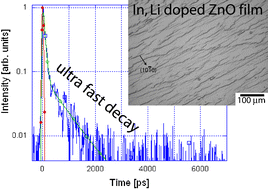Fabrication and luminescence properties of single-crystalline, homoepitaxial zinc oxide films doped with tri- and tetravalent cations prepared by liquid phase epitaxy
Abstract
Single-crystalline, homoepitaxial ZnO films doped with tri- and tetravalent


 Please wait while we load your content...
Please wait while we load your content...